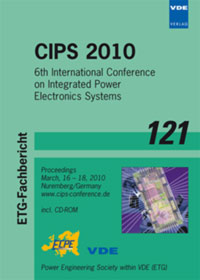A Formal Approach to System Integration
Conference: CIPS 2010 - 6th International Conference on Integrated Power Electronics Systems
03/16/2010 - 03/18/2010 at Nuremberg, Germany
Proceedings: CIPS 2010
Pages: 6Language: englishTyp: PDF
Personal VDE Members are entitled to a 10% discount on this title
Authors:
Gutierrez-Alcaraz, J. M.; Haan, S. W. H. de; Ferreira, J. A. (Delft Technical University – Electrical Power Processing Group, Delft, 2600GA, The Netherlands)
Abstract:
When it comes to system integration certain guidelines have been established through empirical practices and a great deal of trial and error experiments, even nowadays the predominant approach to system integration is practical knowledge and expertise in system building. For this reason a formal methodology is proposed that systematically helps the analysis of the system integration process of complex power electronics systems. Our proposal decomposes a system into its main building blocks, which are called functional units; and by identifying the main interrelations among them; such interrelations can be designed to obtain a system in which its components are tightly integrated. In other words the method consists in the design of the multiple physical interfaces -the system’s interrelations- that the functional units use to relate to each other. We make use of abstract representations of such interrelations, called interrelation planes. When a satisfactory solution is designed in one interrelation plane, such design is projected on the next plane to check for consistency on that plane. Our methodology helps analyze multiple variations of system configurations in a swift and easy way, and discard unfeasible solutions from the beginning of the design process. As a manner of example we present the integration methodology applied to a hybrid drive train and to the integration of a complex system: a 5kW (10 kW peak) Compact Variable Speed Power Generator Set. The analysis of the system configuration is presented, as well as the design of the prototype. Experimental results of some of the functional units that were built for the purpose of validation of the mentioned methodology have been already presented in the literature.


